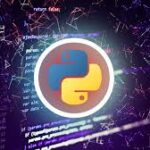“Mastering Network Security with Cisco Firepower Solutions”
SUMMARY
The Securing Networks with Cisco Firepower course is designed for IT professionals who want to enhance their expertise in securing organizational networks using Cisco Firepower security solutions. In an era where cyber threats are increasingly sophisticated and pervasive, organizations must adopt advanced security measures to protect their infrastructure. This course provides a comprehensive understanding of Cisco Firepower’s capabilities, from architecture and configuration to management and troubleshooting, enabling participants to effectively secure their networks against a wide array of threats.
Course Overview
The 300-710 exam, a key component of the Cisco Certified Specialist in Security Implementation certification track, is the focus of this course. It covers critical topics including Cisco Firepower’s architecture, deployment, management, and troubleshooting processes. By the end of the course, participants will have practical, hands-on experience with Cisco Firepower technologies, making them well-prepared for real-world network security challenges.
Key Learning Objectives
- Understanding Cisco Firepower Architecture
Participants will dive into the components of Cisco Firepower, including the Firepower Management Center (FMC) and Firepower Threat Defense (FTD). They will learn how these components interact and the different deployment models available—on-premises, cloud, and hybrid—understanding the strengths and limitations of each. - Installation and Initial Configuration
This section focuses on the practical aspects of installing Cisco Firepower devices and performing the initial setup. Participants will also become proficient in navigating the FMC interface, allowing them to configure and manage security policies effectively. - Access Control Policies
A critical part of network security, access control policies define how traffic is regulated as it enters or leaves the network. Participants will learn how to configure and implement these policies while also exploring Application Visibility and Control (AVC). AVC allows administrators to monitor and manage applications running within the network, a key feature in ensuring robust security. - Intrusion Prevention Systems (IPS)
IPS plays a vital role in preventing unauthorized access and cyber-attacks. Participants will learn how to configure IPS policies to detect and block threats, along with strategies for analyzing alerts and mitigating risks. - Advanced Malware Protection (AMP)
AMP is a critical tool for protecting networks against advanced threats, including zero-day attacks. This section covers how to deploy and manage AMP, analyze files for malicious behavior, and quarantine or remediate threats, thus ensuring comprehensive protection from evolving cyber risks. - VPN and Remote Access
Secure communication between different locations is essential for a modern enterprise. This module focuses on configuring site-to-site VPNs for secure inter-location communication. Additionally, participants will learn how to configure remote access VPNs for users working outside the corporate network, providing secure access to organizational resources. - Monitoring and Reporting
Effective security requires continuous monitoring and reporting. Participants will gain skills in configuring logging and monitoring features in Cisco Firepower. They will also learn how to utilize threat intelligence to improve the organization’s overall security posture. - Troubleshooting and Maintenance
Troubleshooting is essential to ensure that Cisco Firepower solutions remain effective and operational. This module covers troubleshooting techniques specific to Cisco Firepower devices and configurations. Participants will also learn best practices for maintaining the system, including performing software updates and optimizing performance.
Target Audience
This course is tailored for a variety of IT professionals, including:
- Network Security Engineers: Individuals responsible for designing and deploying network security solutions.
- Security Administrators: Professionals tasked with overseeing security solutions and responding to cyber threats.
- Network Engineers: Engineers who want to expand their knowledge in network security, specifically with Cisco Firepower.
- System Administrators: Administrators who want to learn more about securing networks and managing firewalls.
- IT Professionals: Those aspiring to enter the cybersecurity domain and who want to develop practical network security skills.
Prerequisites
To maximize the learning experience, participants are recommended to have:
- Basic understanding of networking concepts such as IP addressing, routing, and switching.
- Familiarity with core security principles such as firewalls, VPNs, and intrusion detection/prevention systems.
- Hands-on experience with Cisco devices and management interfaces is advantageous.
Course Format
The course combines lectures, hands-on labs, and practical exercises. This approach ensures that participants gain theoretical knowledge as well as practical, real-world experience. The hands-on labs are designed to provide extensive practice in configuring and managing Cisco Firepower, ensuring participants are well-prepared for both the exam and real-world scenarios.
Certification and Exam Information
Upon completing the course, participants will be ready to take the 300-710 exam. This exam is a critical step toward earning the Cisco Certified Specialist in Security Implementation certification. The exam consists of multiple-choice questions that test participants’ understanding of Cisco Firepower technologies and their ability to apply this knowledge in various practical situations
Description
In today’s digital landscape, where cyber threats are more sophisticated and prevalent than ever, organizations must adopt advanced security measures to protect their networks. The Securing Networks with Cisco Firepower course is designed for IT professionals who want to deepen their knowledge and skills in implementing and managing Cisco Firepower security solutions. This course provides a comprehensive understanding of how to leverage Cisco Firepower technologies to secure your organization’s network effectively.
Course Overview
The 300-710 exam is part of the Cisco Certified Specialist in Security Implementation certification track. It covers essential topics, including the architecture, configuration, management, and troubleshooting of Cisco Firepower security solutions. By completing this course, participants will gain practical skills that are directly applicable to real-world scenarios.
Key Learning Objectives
- Understanding Cisco Firepower Architecture:
- Explore the various components of Cisco Firepower, including the Firepower Management Center (FMC) and Firepower Threat Defense (FTD).
- Learn about different deployment models, such as on-premises, cloud, and hybrid, and their advantages and disadvantages.
- Installation and Initial Configuration:
- Gain hands-on experience in installing Cisco Firepower devices and configuring the initial setup.
- Understand how to navigate the FMC interface and utilize its features for managing security policies.
- Access Control Policies:
- Learn how to develop and implement access control policies to regulate traffic entering and leaving the network.
- Explore the concept of Application Visibility and Control (AVC) and its role in monitoring and controlling applications within the network.
- Intrusion Prevention Systems (IPS):
- Understand the importance of intrusion prevention and how to configure IPS policies to detect and block potential threats.
- Learn to analyze threat detection alerts and respond appropriately to mitigate risks.
- Advanced Malware Protection (AMP):
- Discover how to implement and manage AMP to protect against advanced threats, including zero-day attacks.
- Explore file analysis capabilities and the process for quarantining and remediating malicious files.
- VPN and Remote Access:
- Learn how to configure site-to-site VPNs for secure communication between different locations.
- Understand the steps involved in setting up remote access VPNs for users working outside the corporate network.
- Monitoring and Reporting:
- Gain skills in configuring logging and monitoring features within Cisco Firepower to track security events and generate reports.
- Learn how to utilize threat intelligence to enhance your organization’s security posture.
- Troubleshooting and Maintenance:
- Develop troubleshooting methodologies to diagnose and resolve issues related to Cisco Firepower devices and configurations.
- Understand best practices for system maintenance, including software updates and performance optimization.
This course is ideal for a range of IT professionals, including:
- Network Security Engineers: Individuals responsible for designing and implementing security measures within enterprise networks.
- Security Administrators: Professionals tasked with monitoring and managing security solutions to protect against cyber threats.
- Network Engineers: Engineers looking to expand their skill set to include network security, specifically with Cisco Firepower technologies.
- System Administrators: Administrators who want to enhance their understanding of securing networks and managing firewalls.
- IT Professionals: Anyone interested in a career in cybersecurity and network security who wants to gain practical skills in securing networks using Cisco technologies.
Prerequisites
To maximize your learning experience, it is recommended that participants have:
- Basic knowledge of networking concepts, including IP addressing, routing, and switching.
- Familiarity with fundamental security principles, such as firewalls, VPNs, and intrusion detection/prevention systems.
- Hands-on experience with Cisco devices and management interfaces.
Course Format
The Securing Networks with Cisco Firepower course is delivered through a combination of lectures, hands-on labs, and practical exercises. Participants will engage in real-world scenarios to reinforce their learning and apply concepts in a controlled environment. The hands-on labs are designed to provide practical experience in configuring and managing Cisco Firepower devices, ensuring that you are well-prepared for the exam and real-world application.










